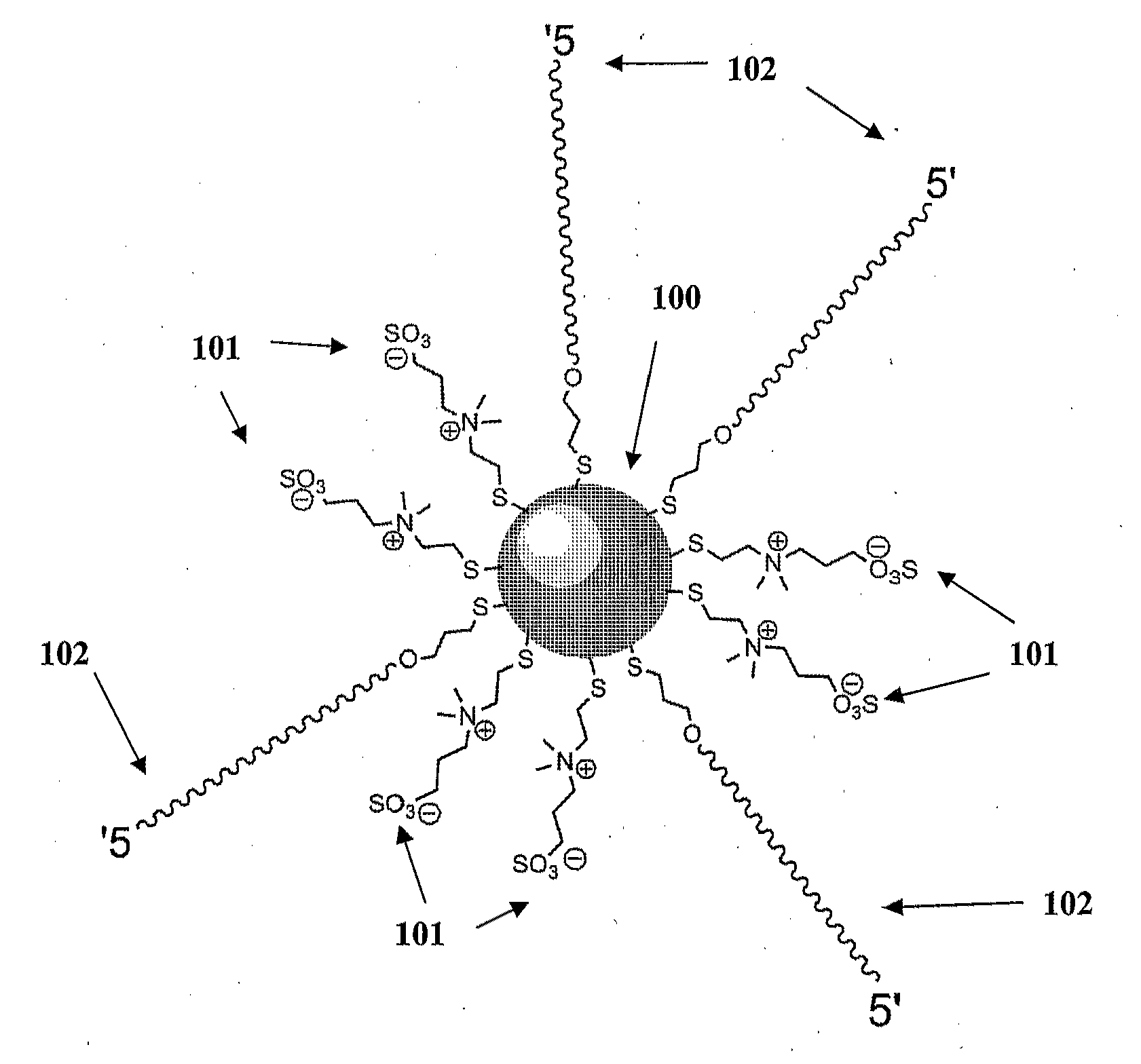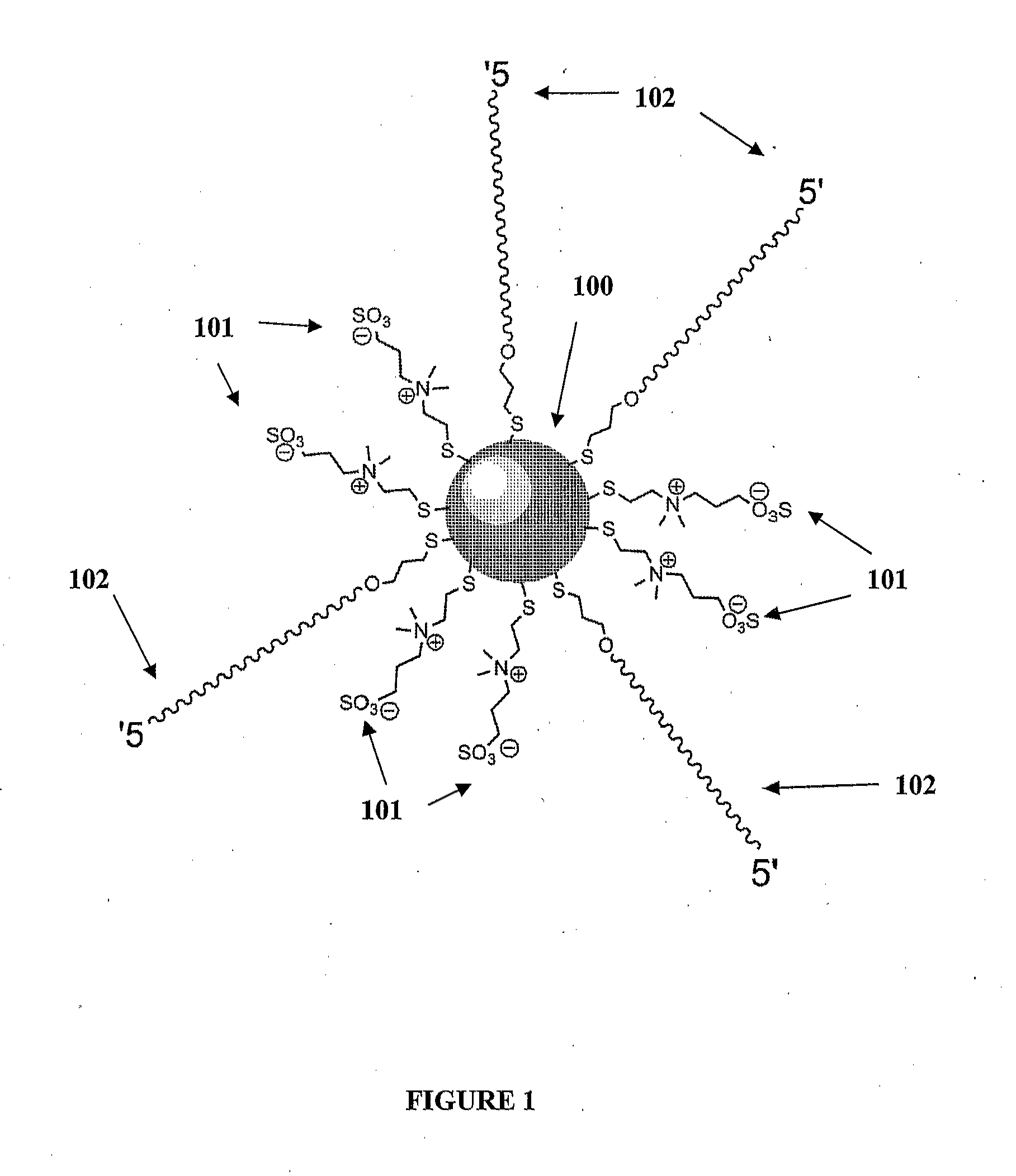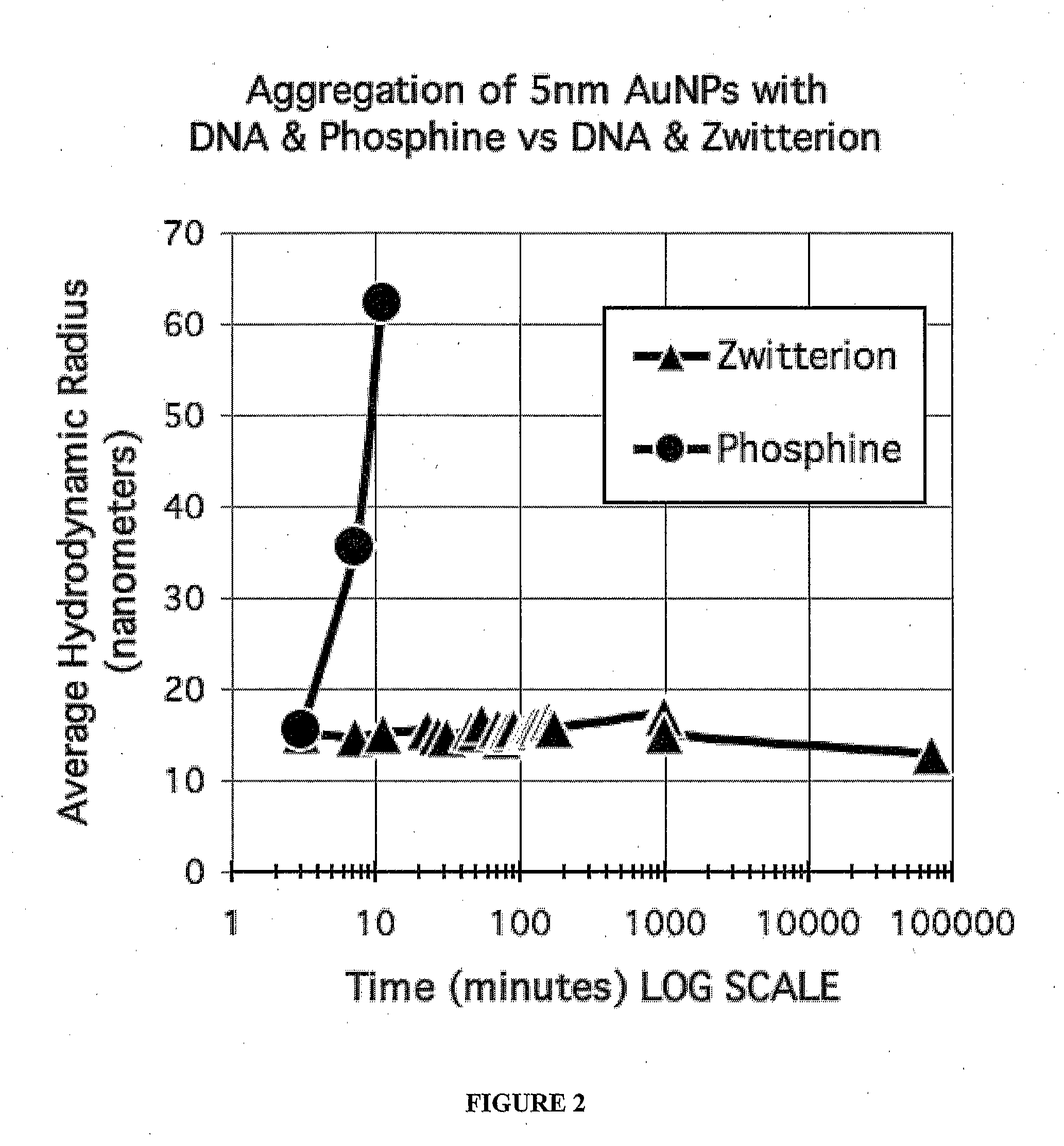Zwitterion-Linker Coatings for Nano-objects in Solutions of Multivalent Counterions
a nano-object and multi-valent counterion technology, applied in the field of structural nanotechnology, can solve the problems of nps that aggregate in this manner, nps alone lack some of the more desirable properties, and the use of nucleic acids in combination with nps has proved problematic, so as to facilitate nano-structure assembly and reduce or prevent non-specific spontaneous aggregation of nps
- Summary
- Abstract
- Description
- Claims
- Application Information
AI Technical Summary
Benefits of technology
Problems solved by technology
Method used
Image
Examples
examples
[0069]The following example is intended for illustrative purposes only and should not be considered as limiting the invention.
[0070]FIG. 1 is an illustration of a nanoparticle coated with zwitterions and a linker portion. Specifically, the nanoparticle shown is a 5-nm diameter gold nanoparticle (AuNP) (100). The zwitterion attached to the AuNP is 3-(N,N-dimethyl(2-sulfidoethyl)ammonio)propane-1-sulfonate (Compound A) (101) which is attached through thiol attachment chemistry. Also attached to the AuNP is a linker portion that comprises multiple copies of a DNA molecule (102).
Comparative Data
[0071]The nanoparticle coatings of the present invention have been shown to resist non-specific aggregation that is otherwise caused by the presence of 10 mM Mg ions. The coatings also allow the NPs to be assembled onto a suitable DNA nanoscaffold in the presence of 10 mM Mg ions.
[0072]FIG. 2 provides comparative data demonstrating some advantages of the present invention. Spe...
PUM
 Login to View More
Login to View More Abstract
Description
Claims
Application Information
 Login to View More
Login to View More - R&D
- Intellectual Property
- Life Sciences
- Materials
- Tech Scout
- Unparalleled Data Quality
- Higher Quality Content
- 60% Fewer Hallucinations
Browse by: Latest US Patents, China's latest patents, Technical Efficacy Thesaurus, Application Domain, Technology Topic, Popular Technical Reports.
© 2025 PatSnap. All rights reserved.Legal|Privacy policy|Modern Slavery Act Transparency Statement|Sitemap|About US| Contact US: help@patsnap.com



